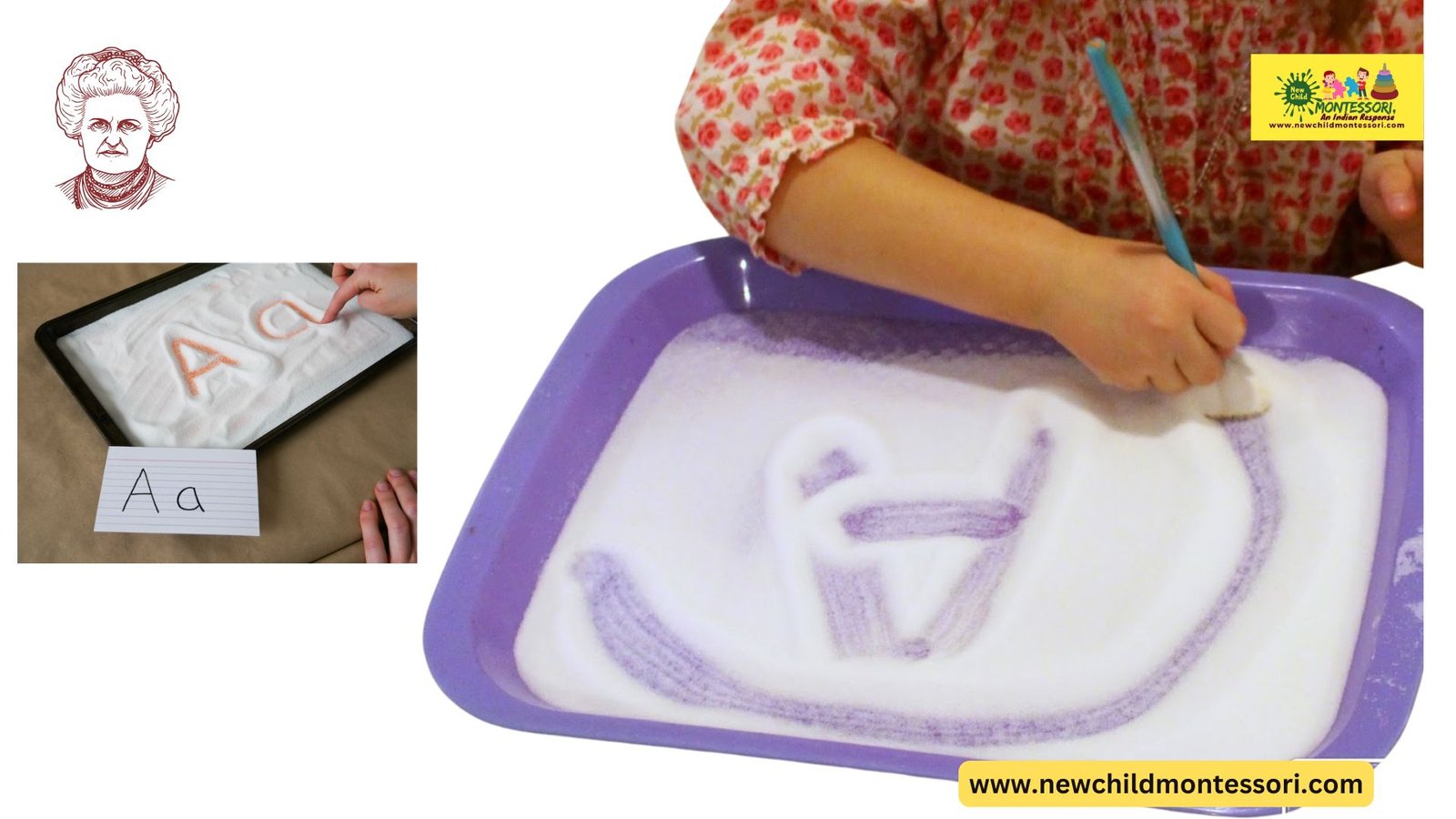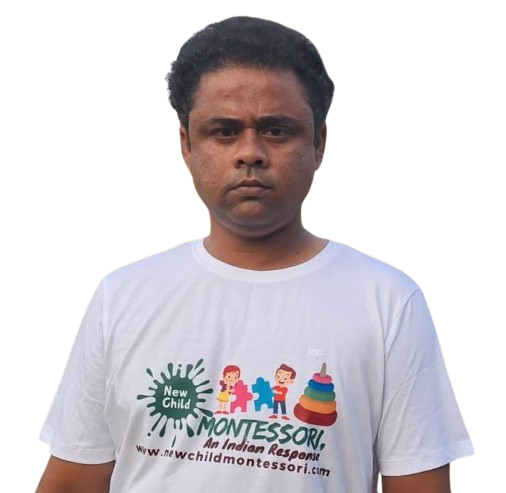Based on my decade-long experience in teaching through the Montessori Method, I assure you that language development in this approach is not just about cramming the alphabet or reciting rhymes. It goes beyond that. It is about igniting curiosity, using the senses, and encouraging self-expression.
I assume you are a parent or an educator seeking meaningful hands-on ways to nurture language skills. Hence, I have prepared this unique guide to bring together three powerful Montessori activities: phonetic alphabet exploration, poetry immersion, and story creation.
- Salt Trays & Phonetic Sounds: Learning with the Senses:
We, as Montessori teachers, introduce children to the phonetic sounds of letters before their names. As a result, this process helps children build a strong foundation for reading and writing. In addition, there is a simpler and more effective way to teach phonetic sounds at home i.e. with salt trays.

As a teacher, I fill the shallow trays with a layer of salt and invite children to trace letters using their fingers. The tactile sensation reinforces memory and muscle coordination. You also can use sandpaper letters as a visual and physical guide.
Pro tip: Introduce only two letters at a time, especially ones that differ clearly in shape and sound. Repetition and patience are key!
- The Power of Poetry: Language Through Rhythm and Rhyme:
The Montessori Method does not use poetry as just cute verses and rhymes rather it uses poetry as a pathway to deeper understanding.
As poems play with language, they evoke emotion in children and therefore they can process the world around them. Books like The Cat in the Hat delight children with their absurd imagery and rhythmic patterns.
I start with short, four-line poems and then gradually move to longer ones. Furthermore, I believe that poetry serves as a memory aid for days of the week, months, or even life lessons.
Bonus idea: Add some fun with tongue twisters likes “Peter Piper picked a peck…”—they’re great for articulation and a good laugh!
- Making Up Stories: Boosting Creativity and Communication:
I always encourage my children and my students to create their own stories because I know that this will strengthen their vocabulary, confidence, and imagination. What is more, I prefer them to ask questions like:
- Who are the characters?”
- “Where do they live?”
- “What happens next?”
Finally, I praise them after they have finished storytelling.
In the end, I would like to tell you that Montessori language activities are more than educational –they are magical moments of connection.

Sumanta De is an educator. He has been teaching students for more than 16 years following the principles of Dr.Maria Montessori. He has a 7-year-old son and a 5-year-old daughter.
He is nurturing his children abiding by the principles of Dr.Maria Montessori. His passion for Montessori methods goes beyond the classroom.
Hence, he shares his experiences and insights through a dedicated Montessori blog and a YouTube channel under the name “NewChild Montessori”. He aims to offer valuable guidance to both parents and educators.
Education: M.A. English, Masters in Child Psychology & Bachelor’s Degree in Montessori Teachers Training